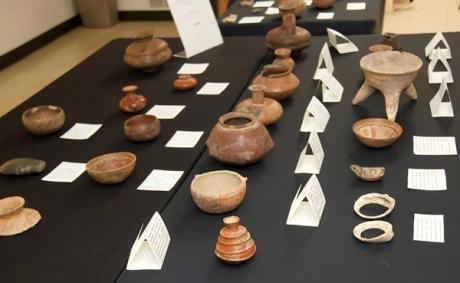
Two collectors in San Diego, Calif., voluntarily turned over 65 archaeological artifacts to the Mexican government earlier this month. Norm Werthman and Pete Mechalas rendered the objects in a ceremony held at the Mexican Consulate in San Diego on May 16. The objects returned belonged to the Preclassic, Classic and Postclassic Mesoamerican periods, whose geographical origin extended from the region of the central Mexican plateau to the Gulf of Mexico.
Particularly noteworthy objects include a glass with a clay pedestal-like stand modeled by Gulf Coast craftsmen between 100CE and 900CE and a cajected or bowl decorated with line and dot patterns originating in the aesthetic tradition of the Tumbas de Tiro, or Shaft Tombs – underground burial chambers used by the social elites of pre-Hispanic western Mexico.
“I thank these citizens of San Diego for the generous and selfless gesture of returning these coins to the Mexican people,” González Gutiérrez, the consul general, said in a statement. “This is part of the Mexican government’s ongoing effort to reinstate pieces of historical and archaeological value that are part of the nation’s heritage.”
The artifacts will be repatriated in the near future, according to the Mexican Federal Ministry of Culture. The Ministry of Foreign Affairs will be responsible for ensuring the safe return of the objects to the National Institute of Anthropology and History (INAH), which will carry out the necessary inspections and analyses.
INAH did not share additional information on how Werthman and Mechalas obtained the repatriated items. The return of the artifacts to Mexico is part of a long-term effort by the administration of current Mexican President Andrés Manuel López Obrador to reclaim the country’s cultural heritage while changing attitudes toward illicit trafficking. The government’s social media campaign #MiPatrimoniaNoSeVende (“My Heritage Is Not For Sale”), launched in 2018, has inspired the return of more than 9,000 illegally traded artifacts since its inception, according to INAH, prompting several other nations to follow suit with their own campaigns of hashtag.
